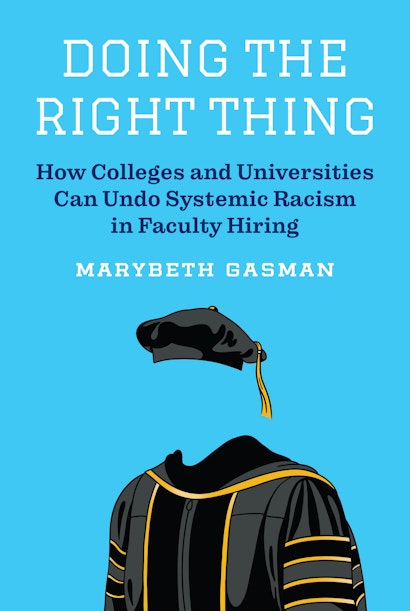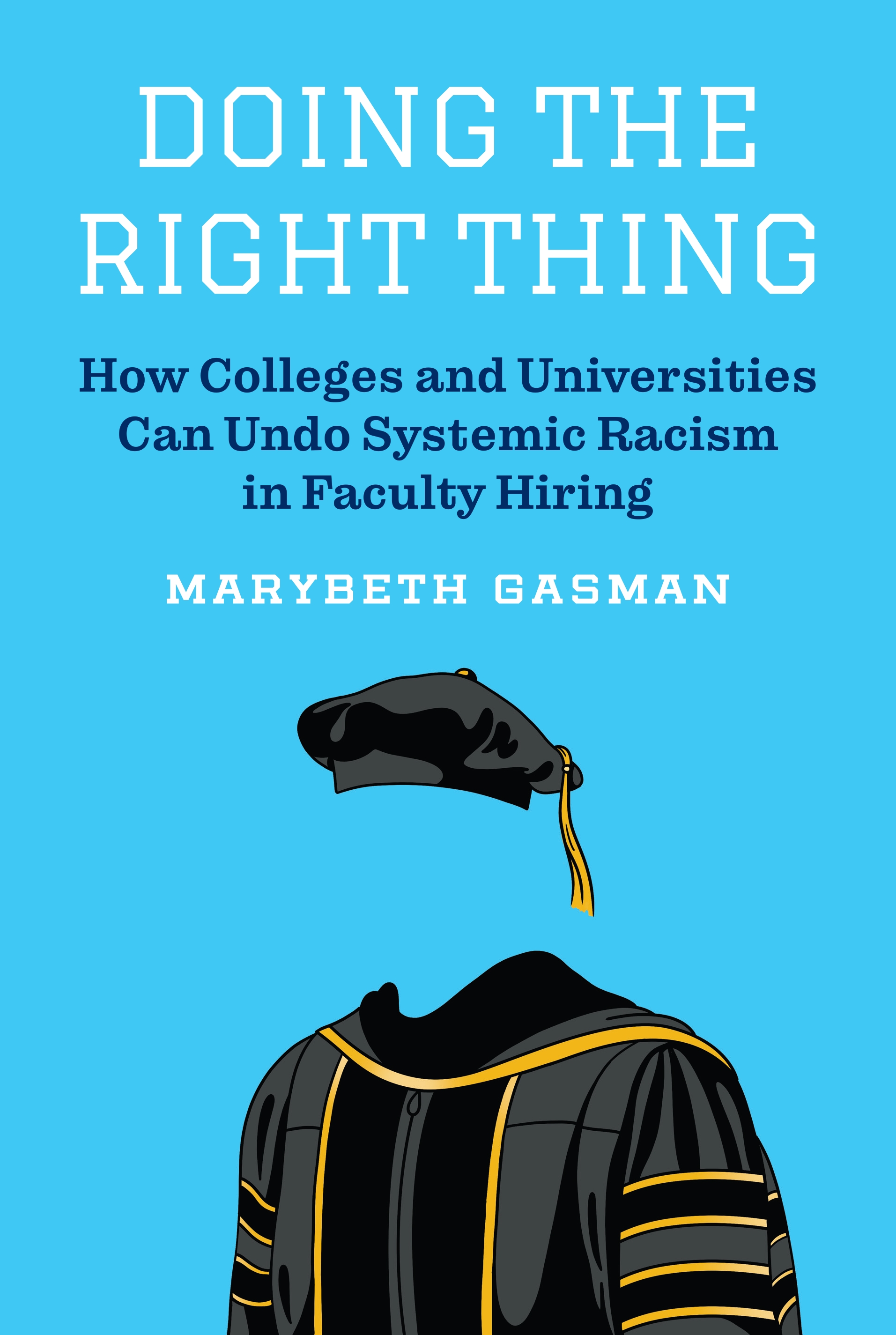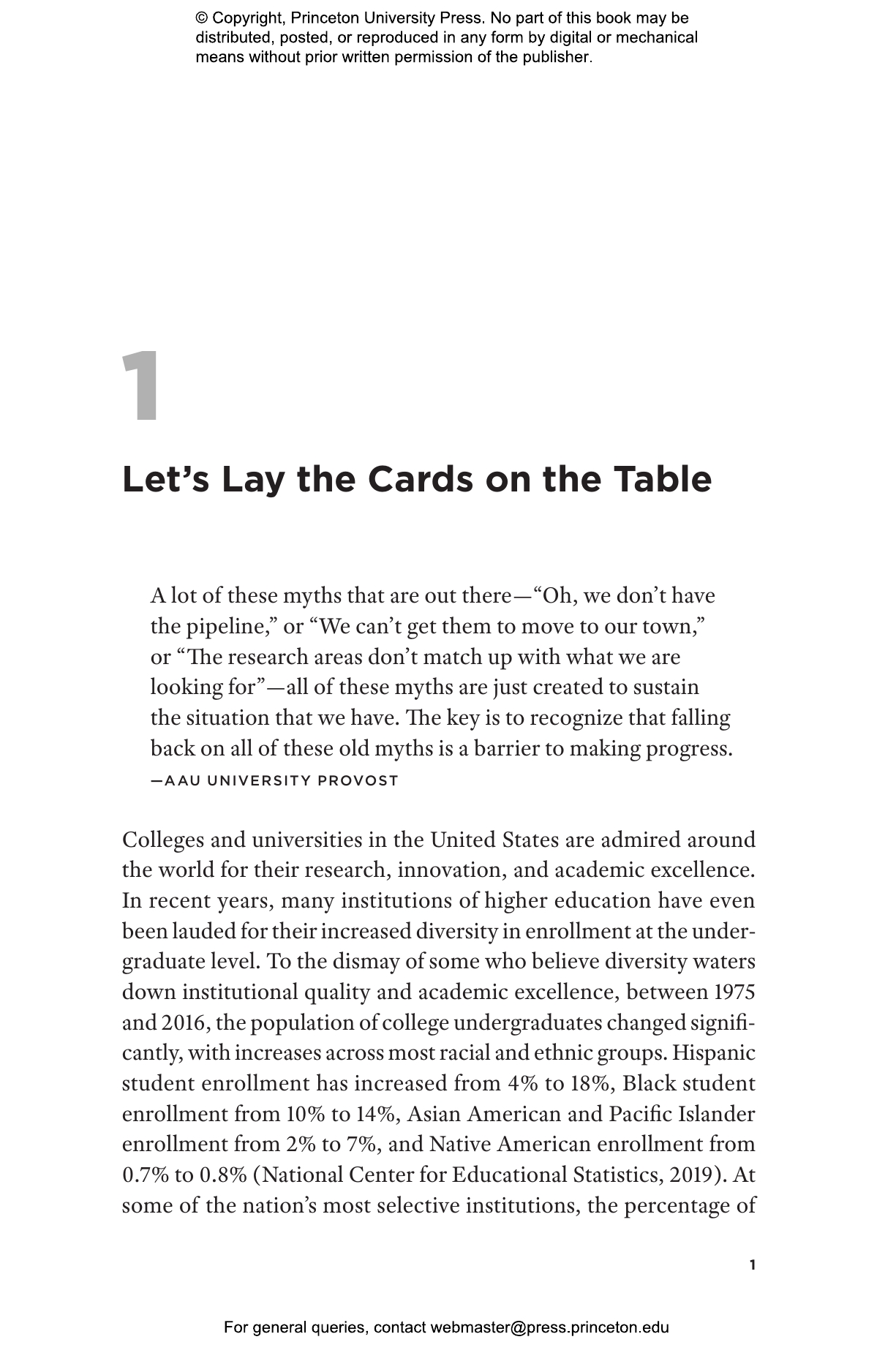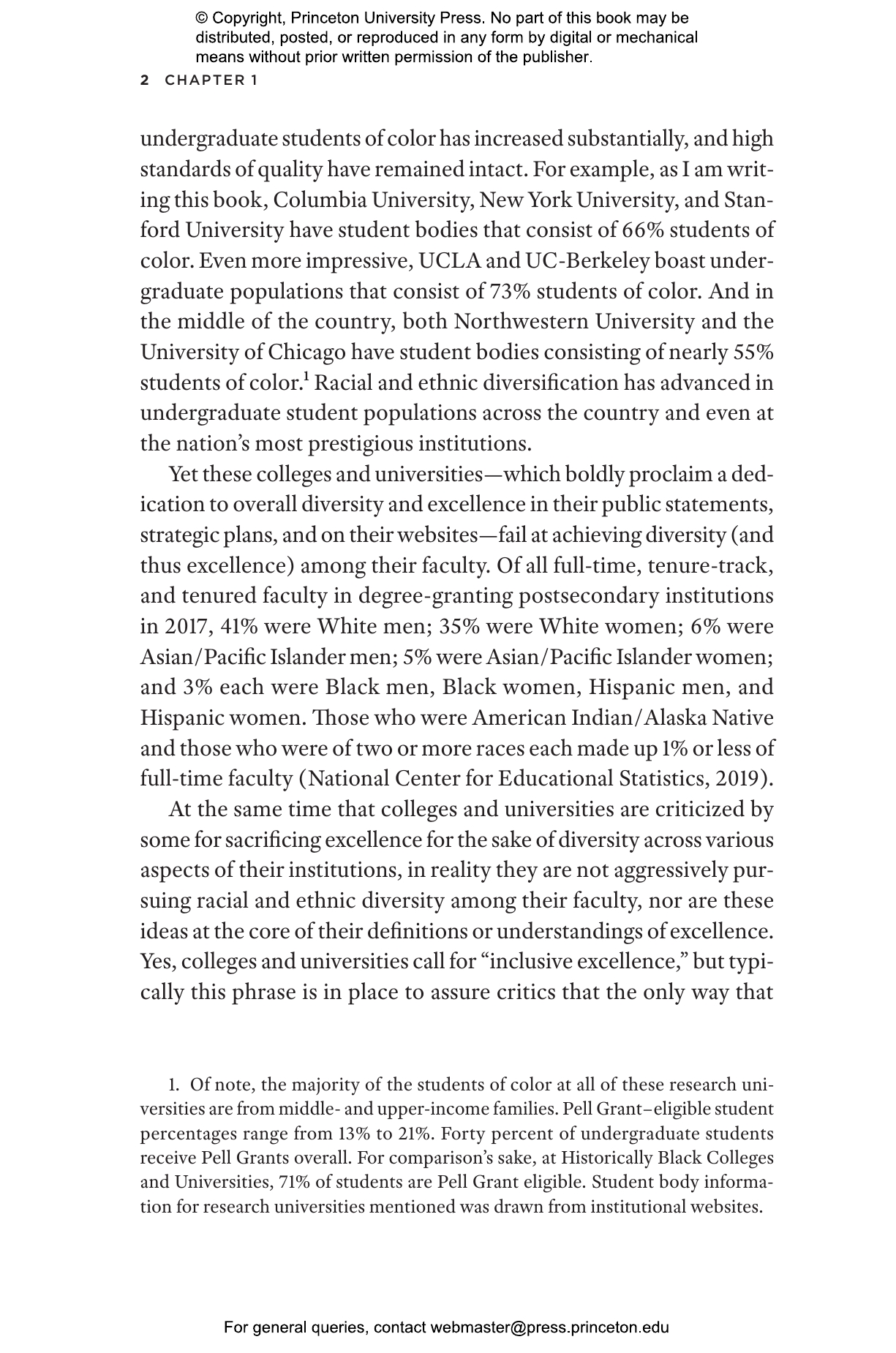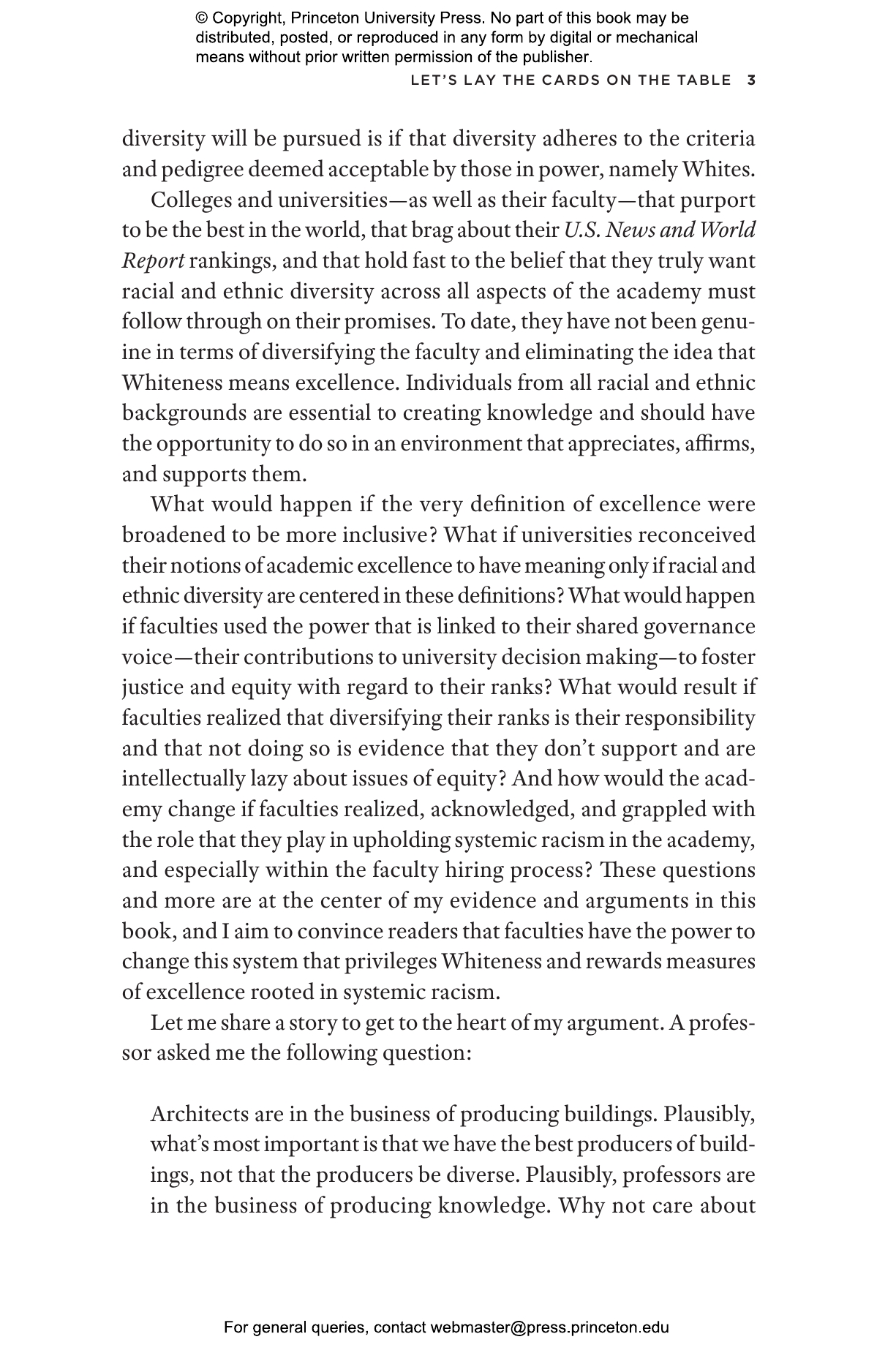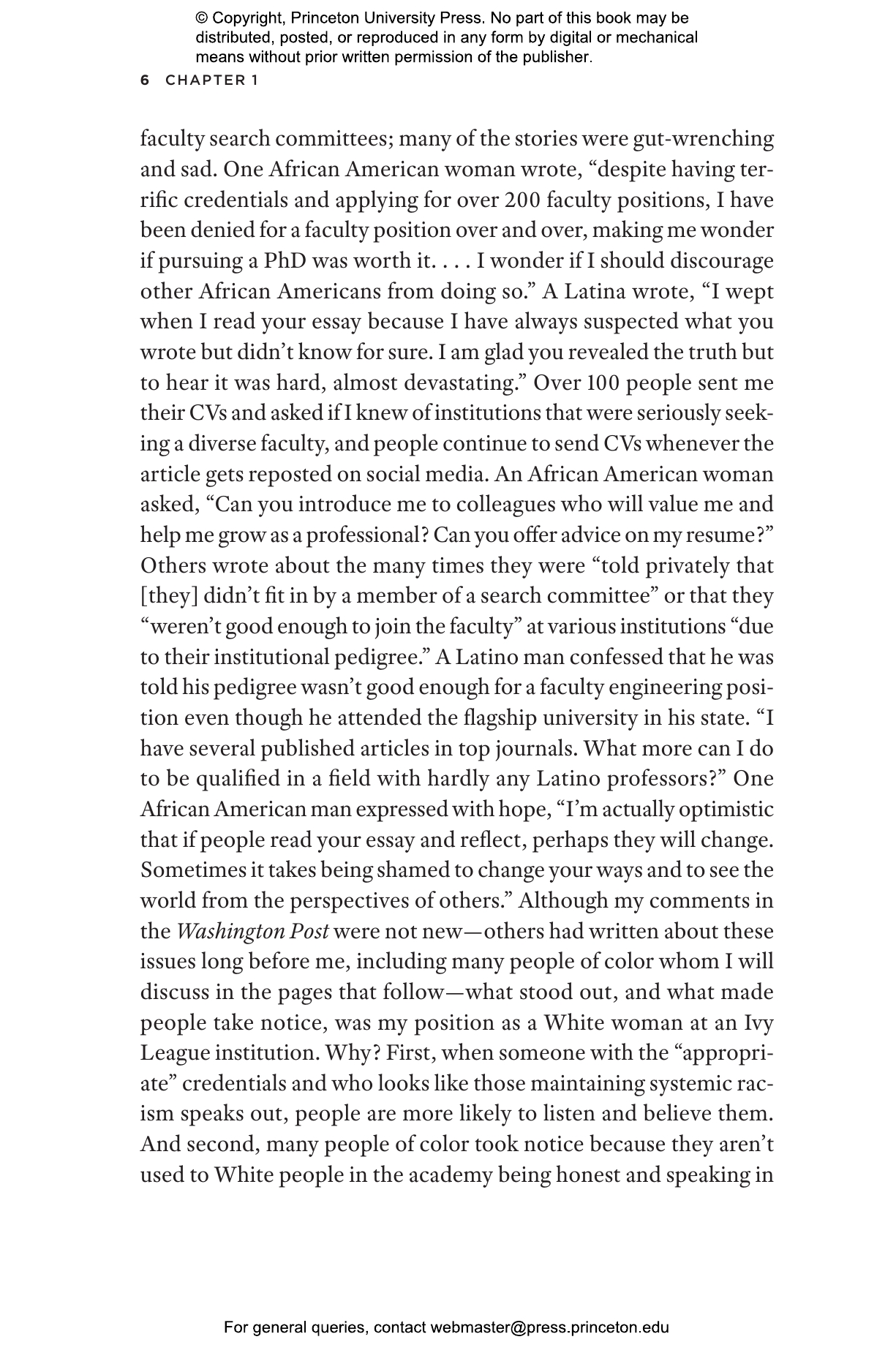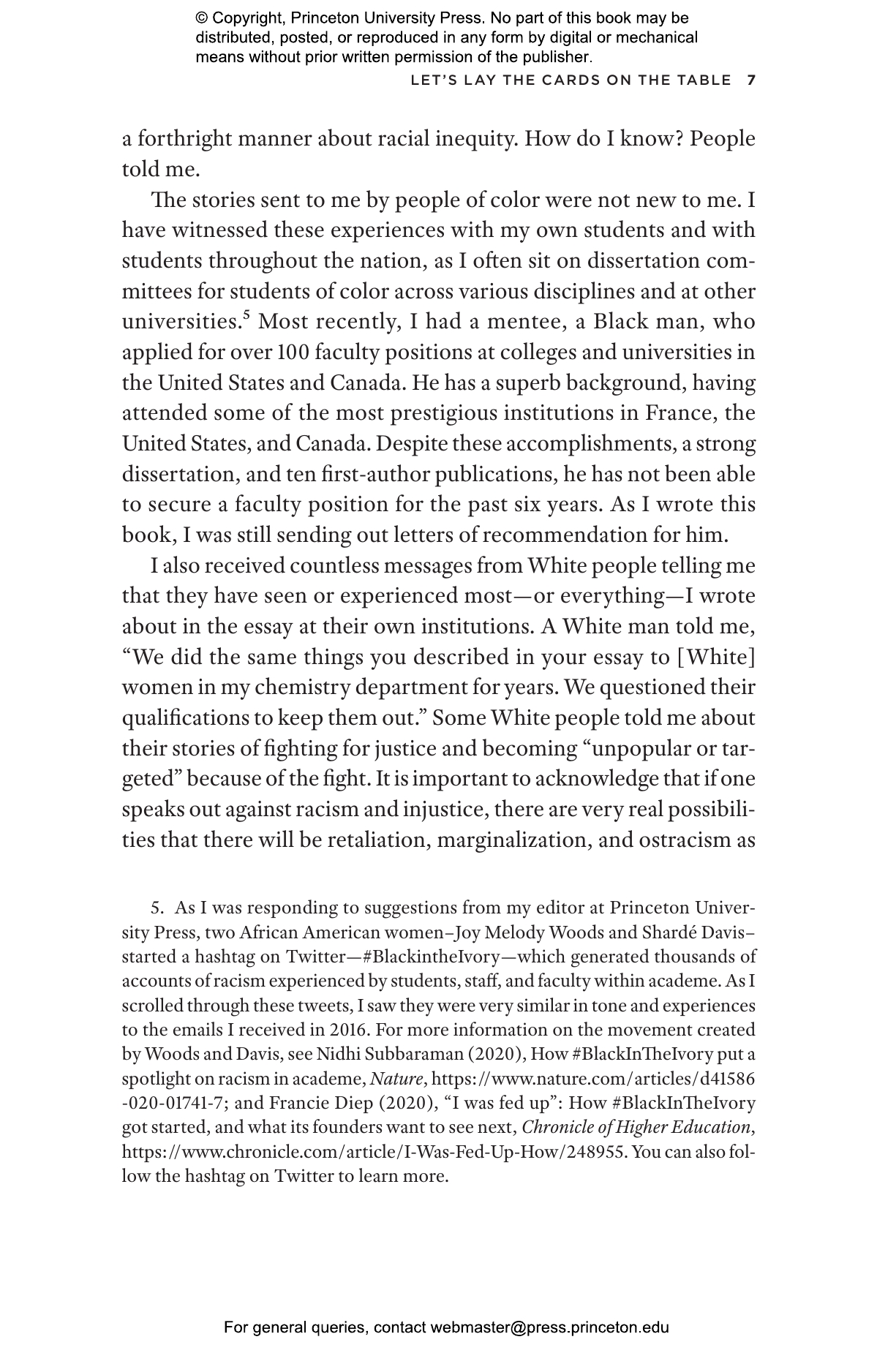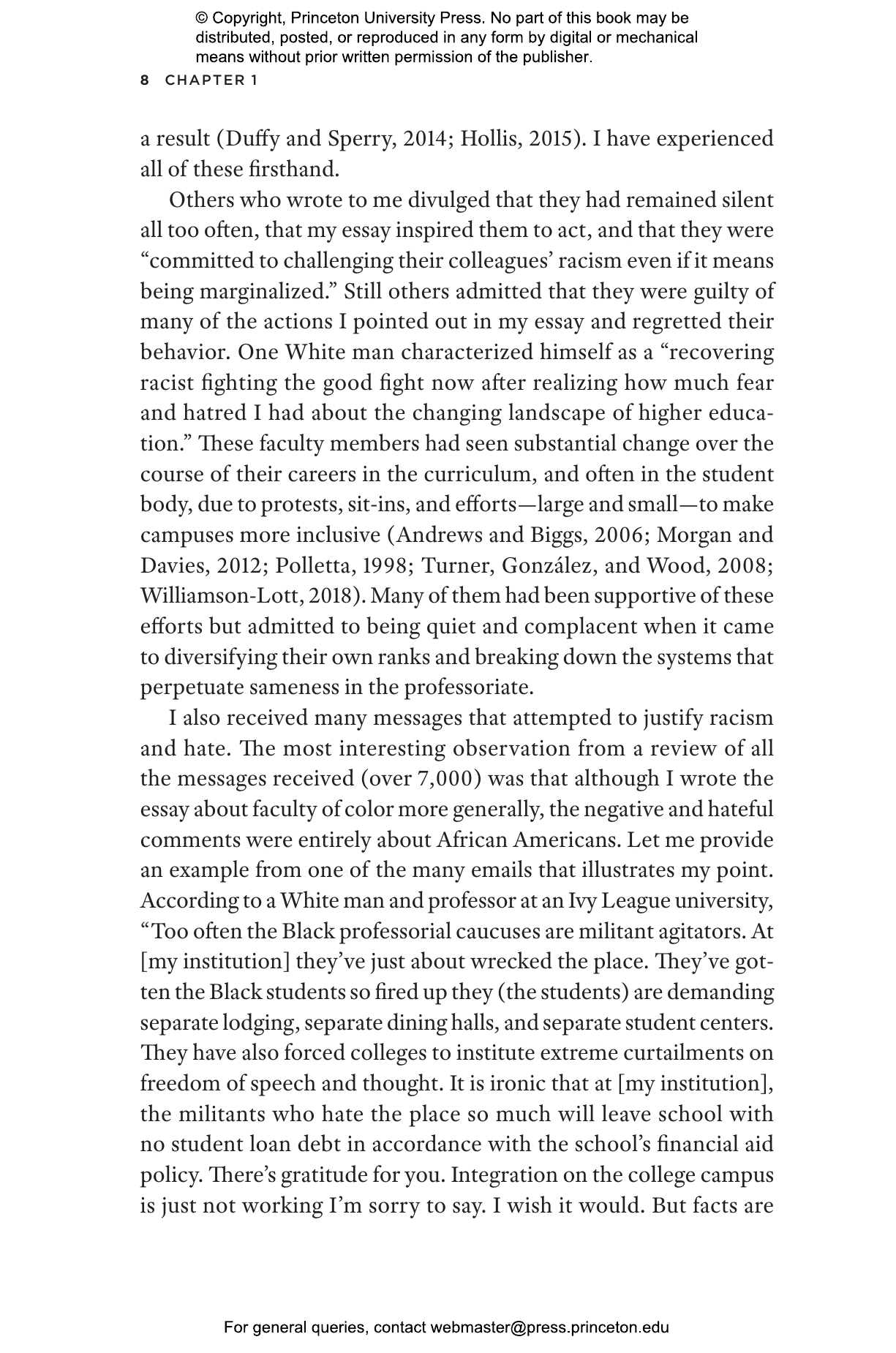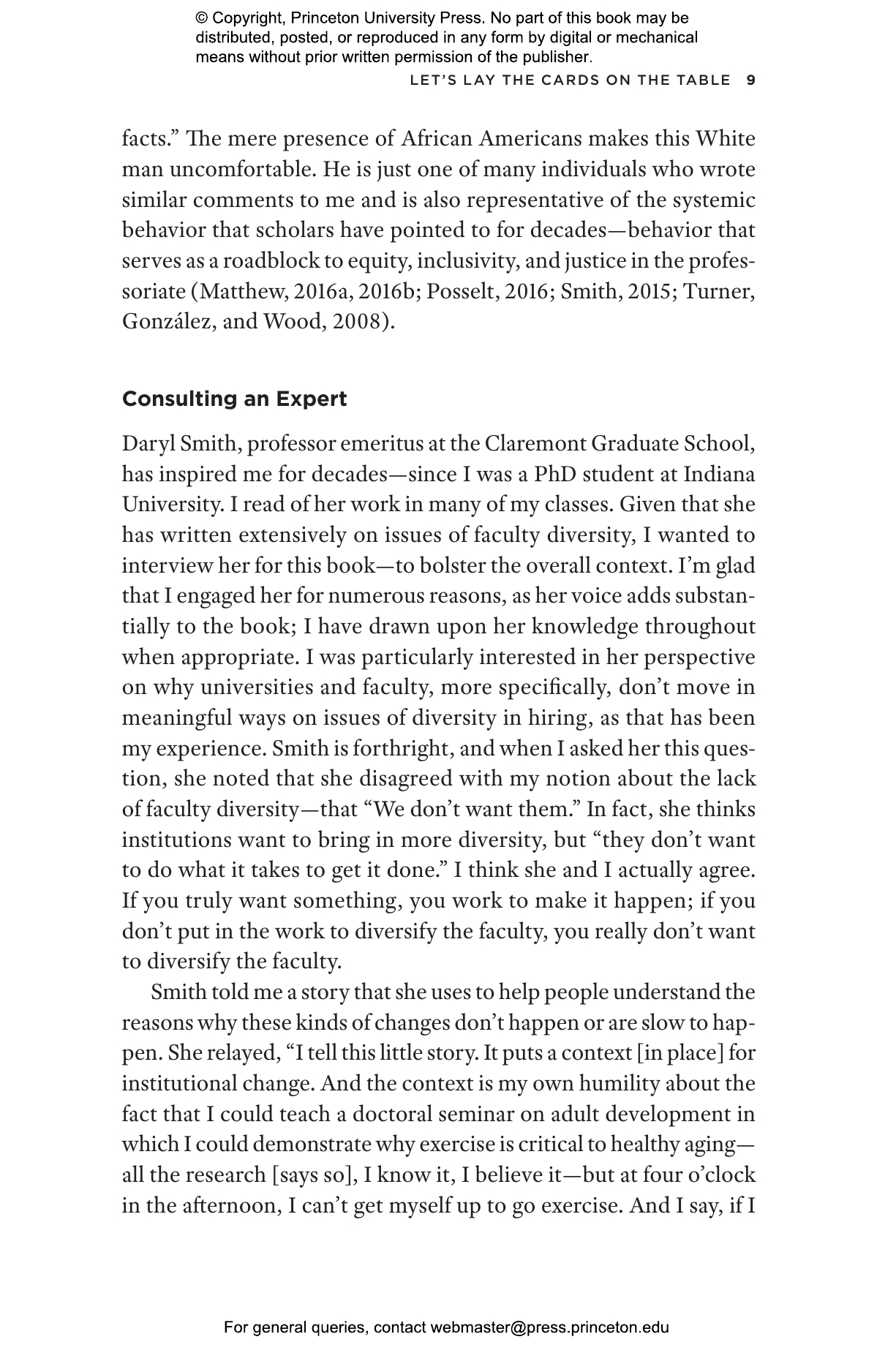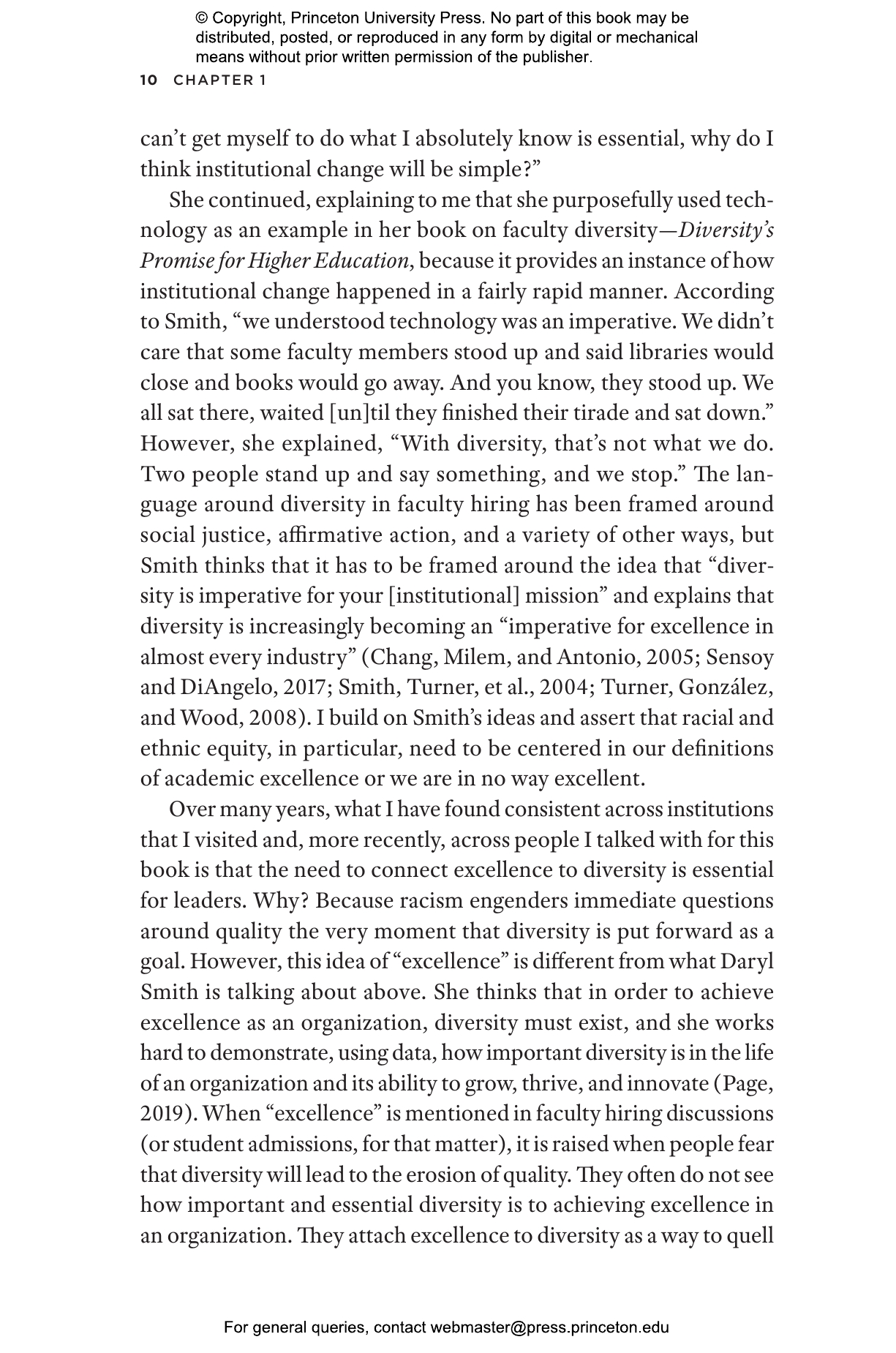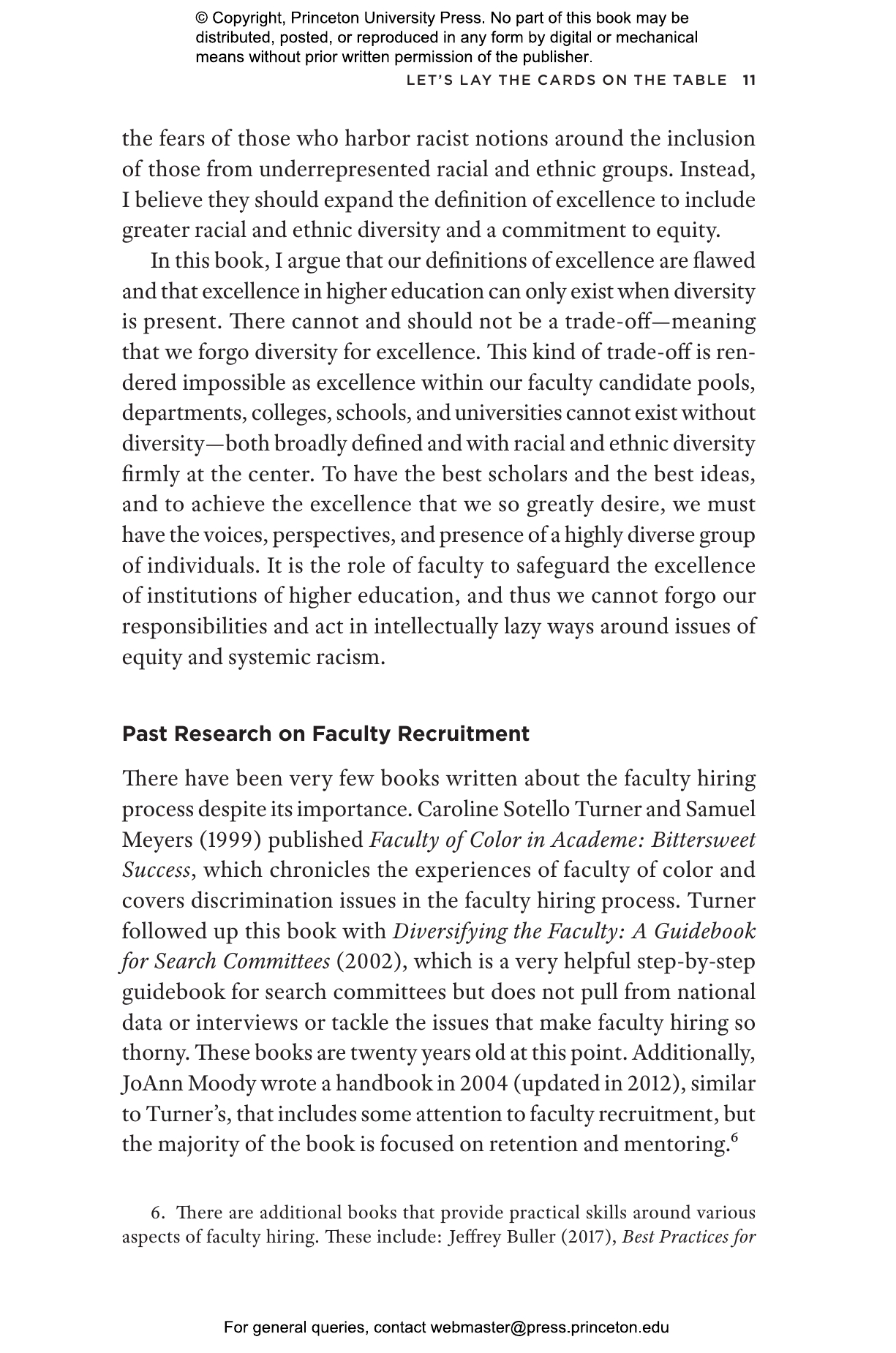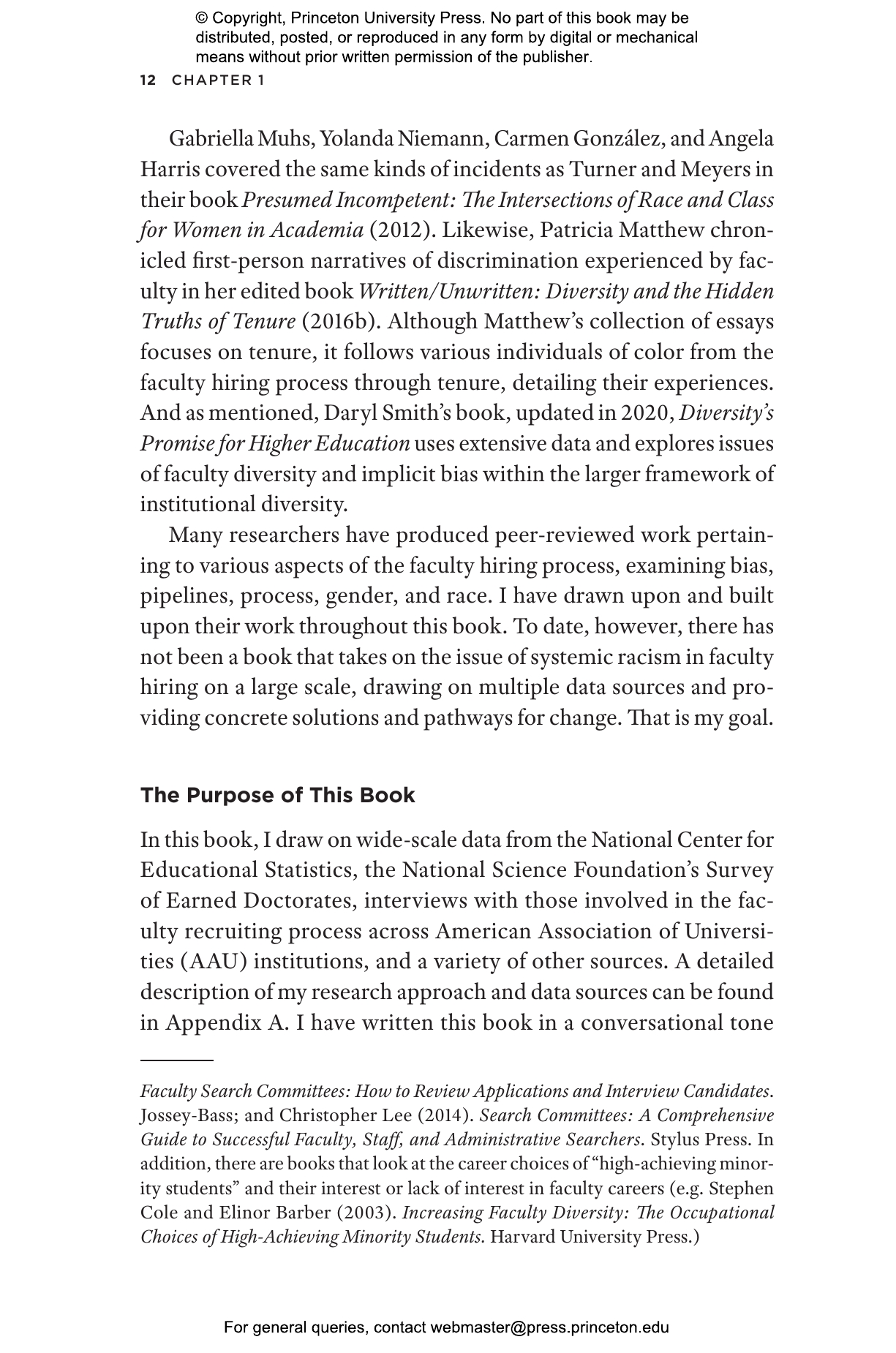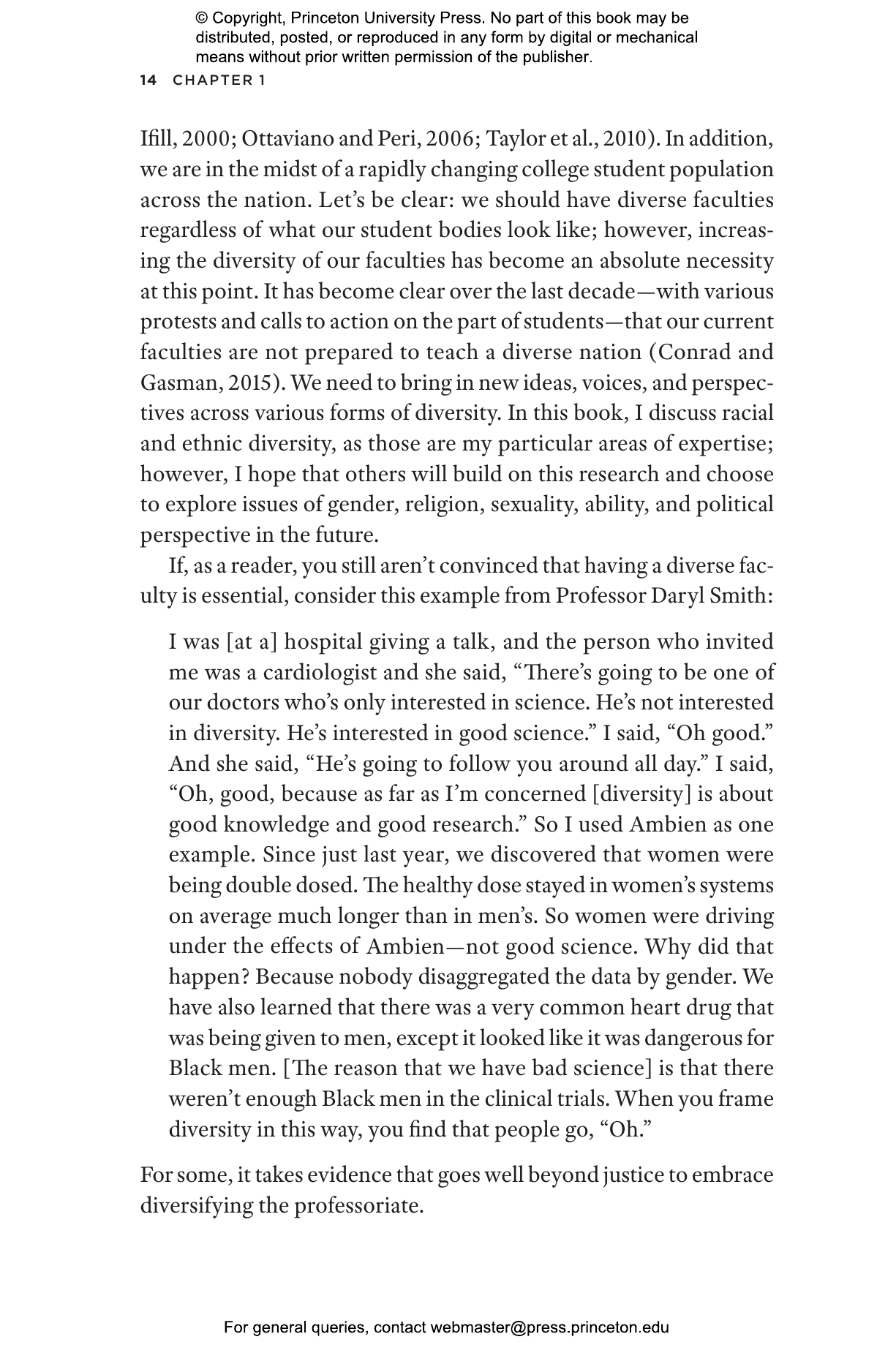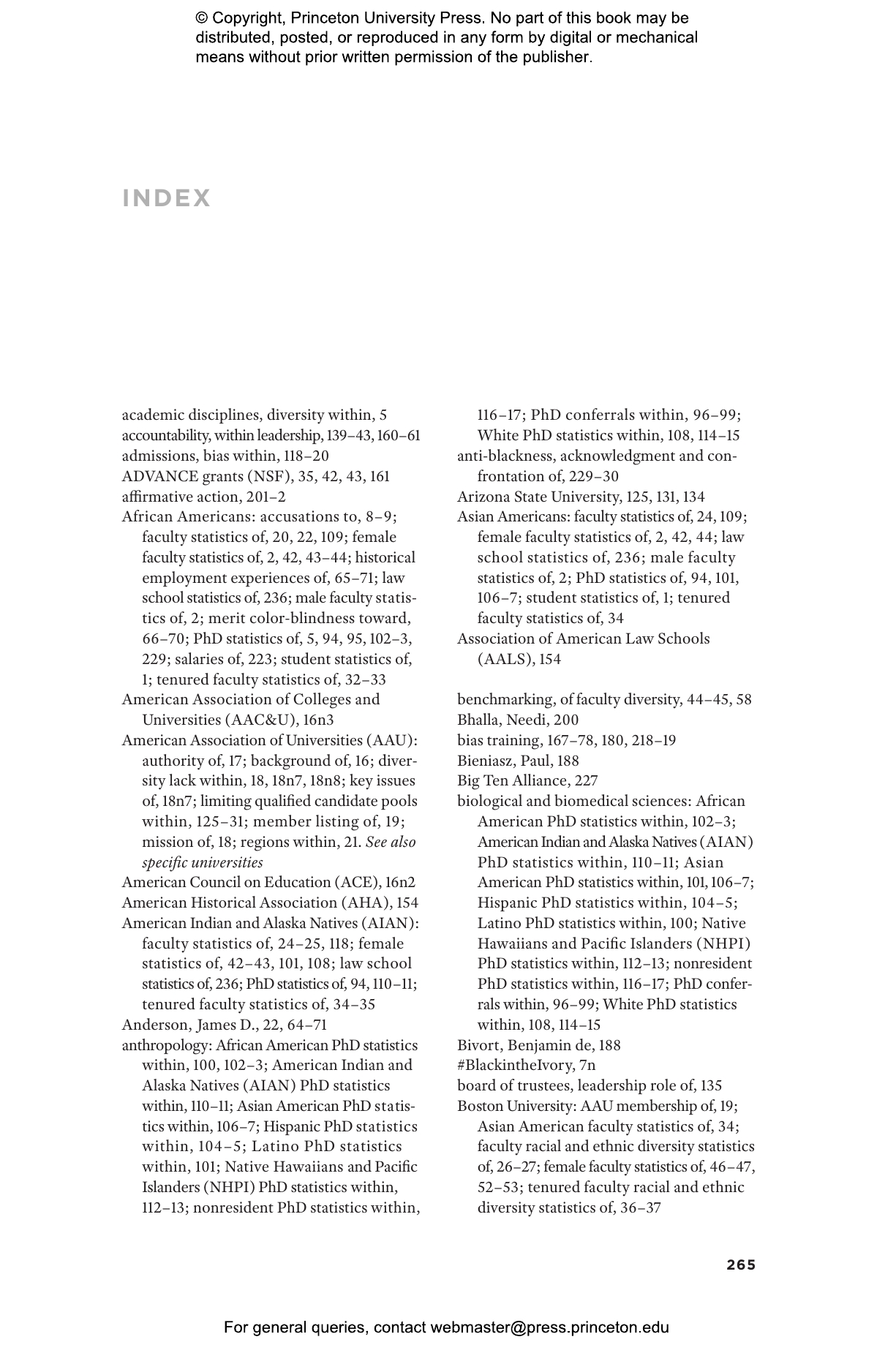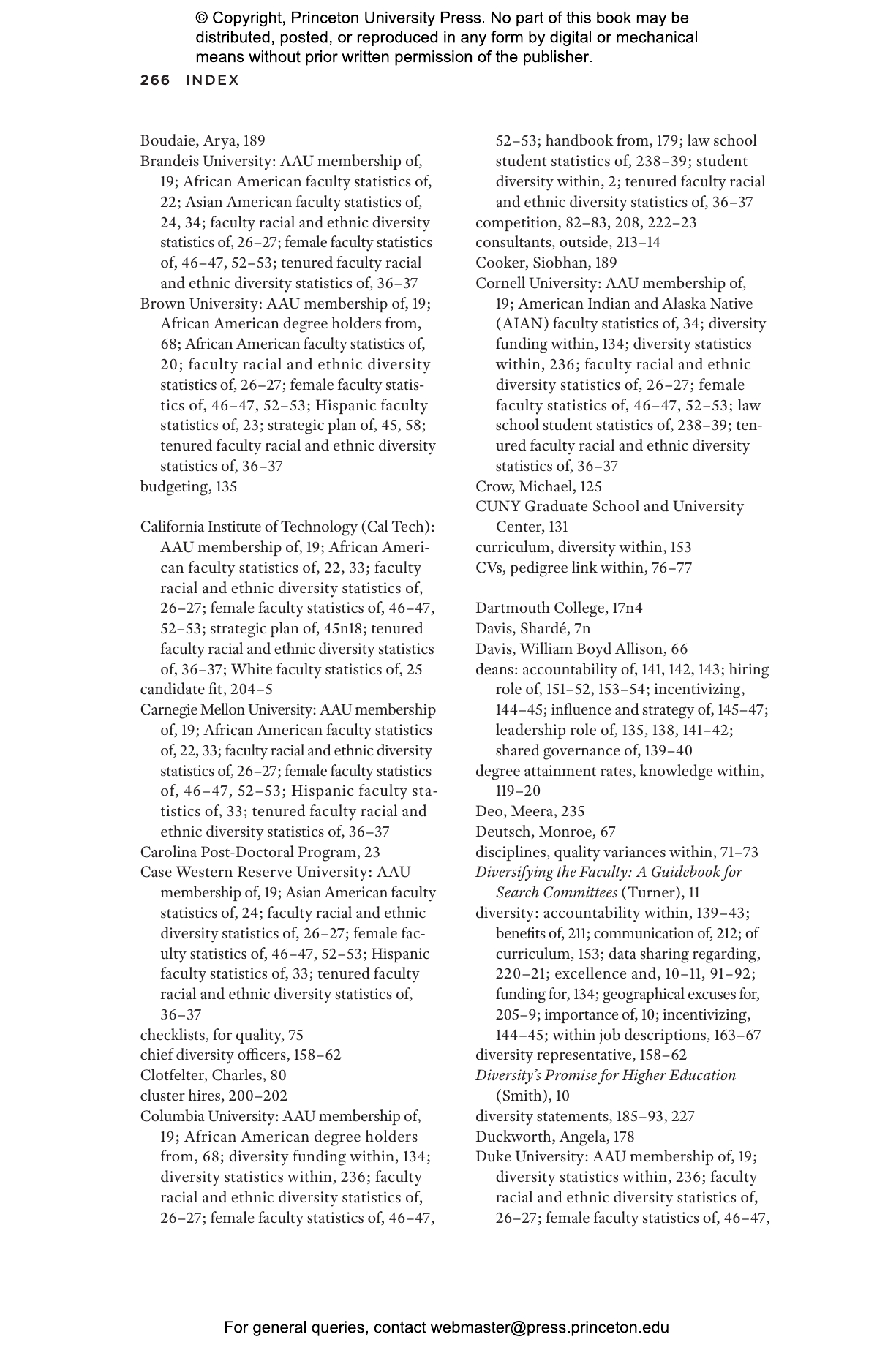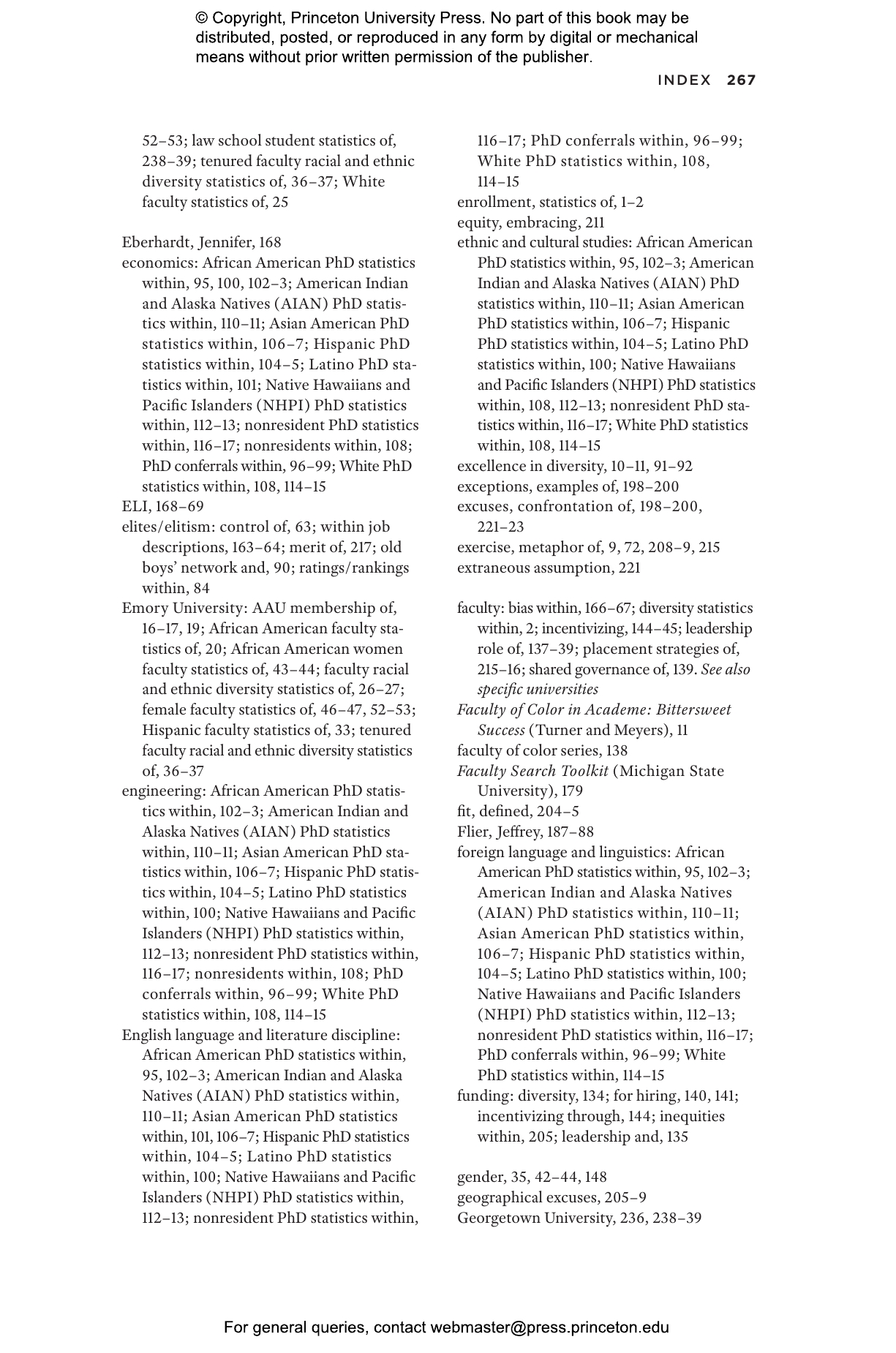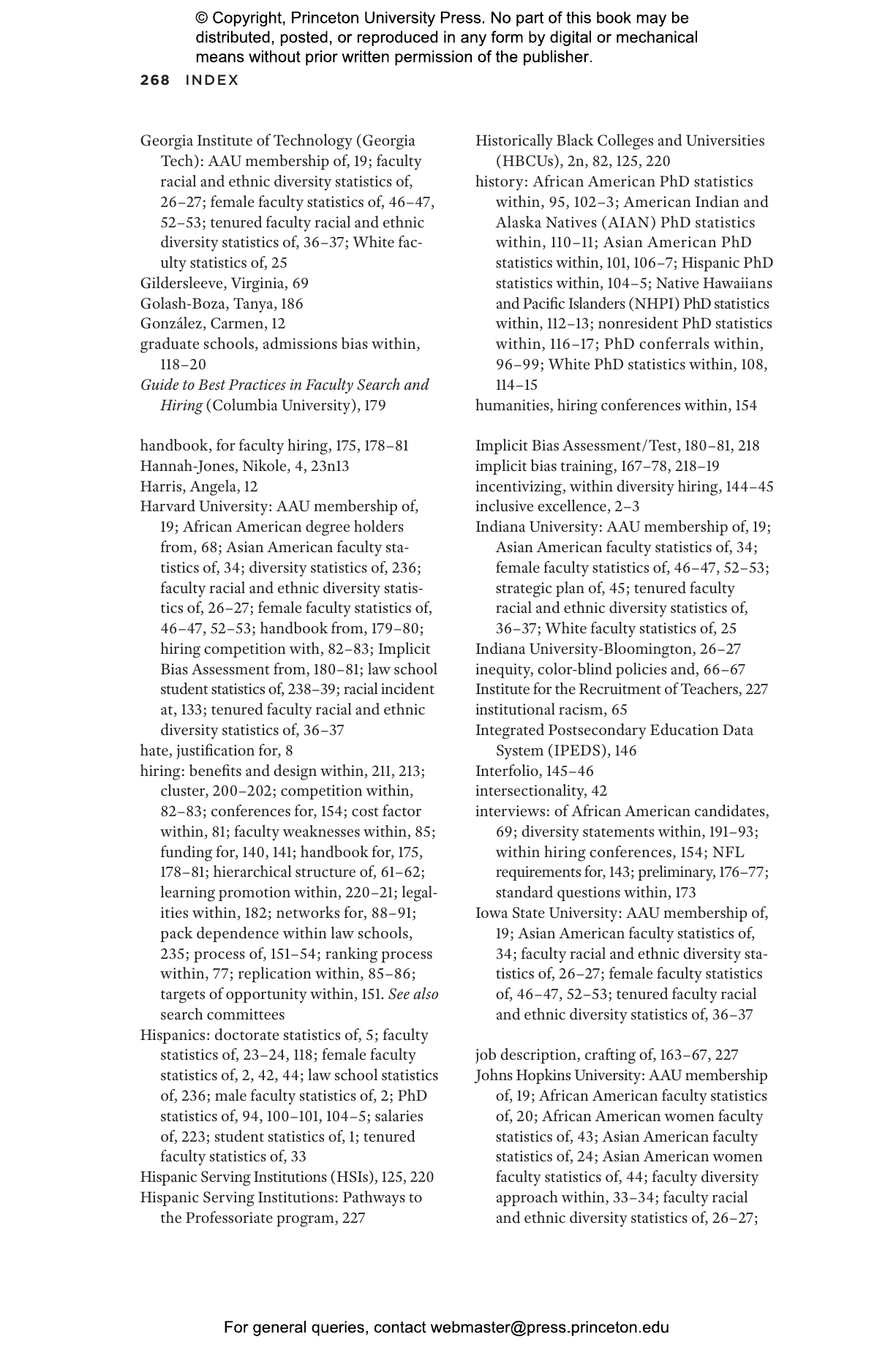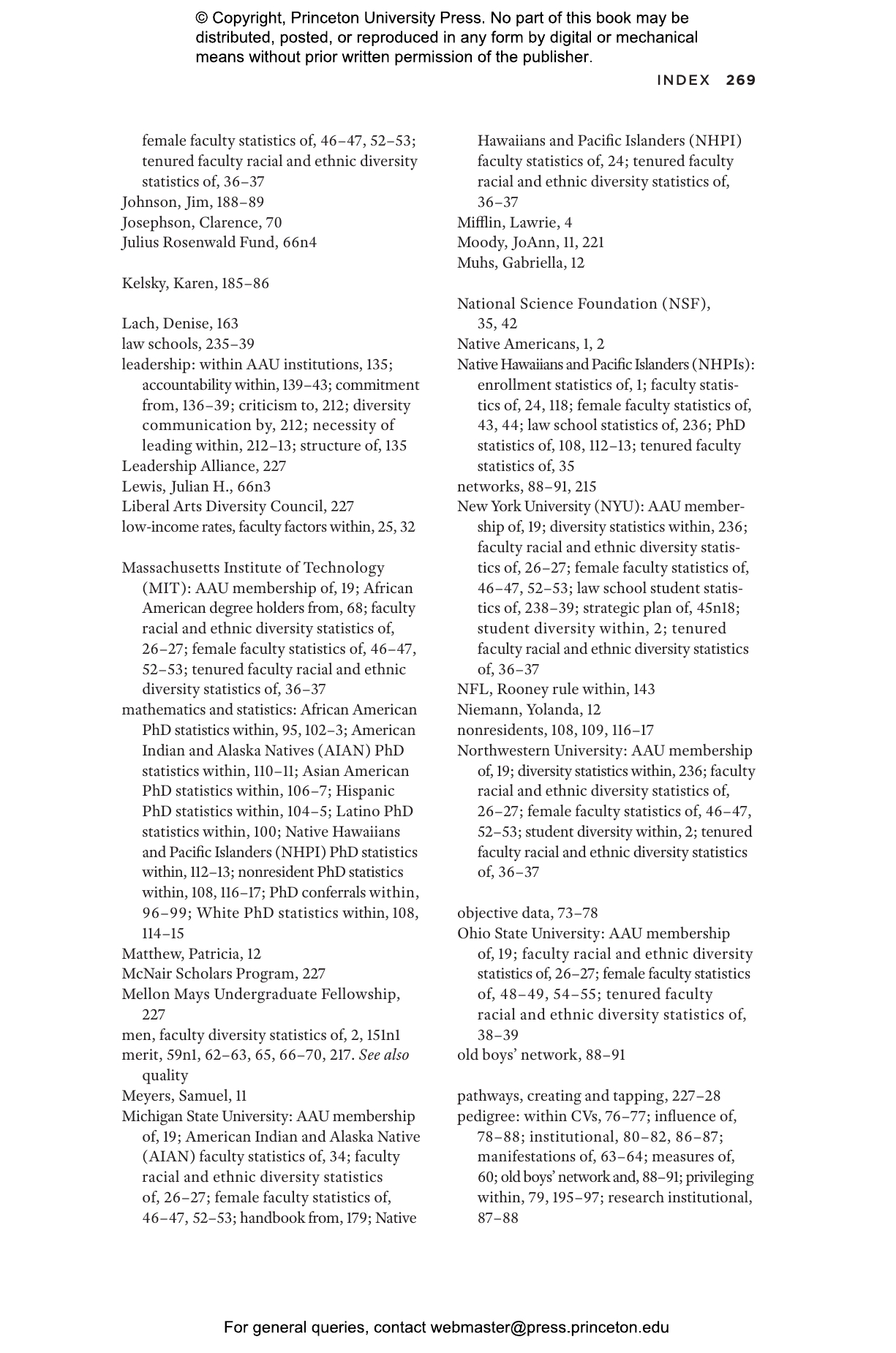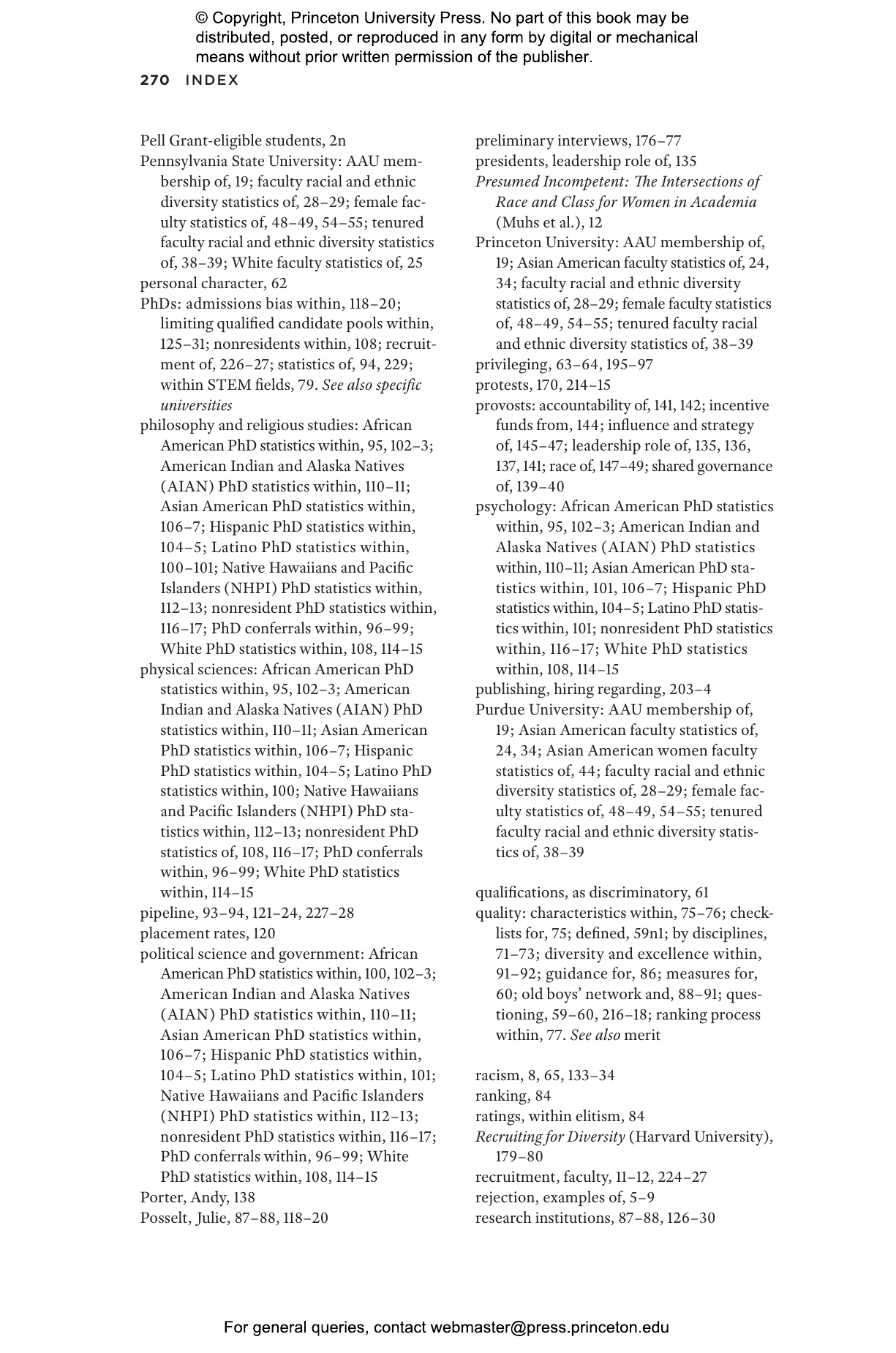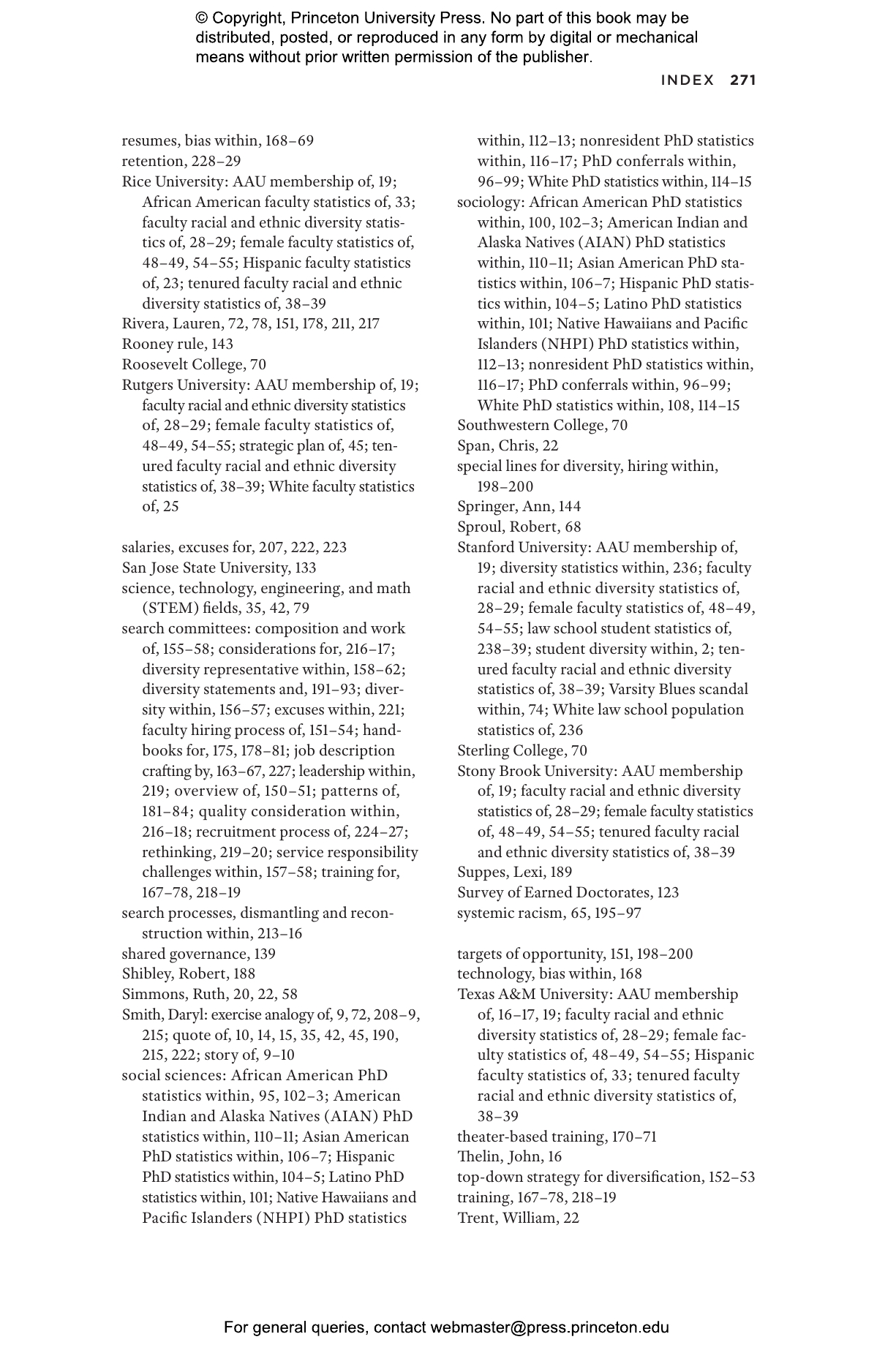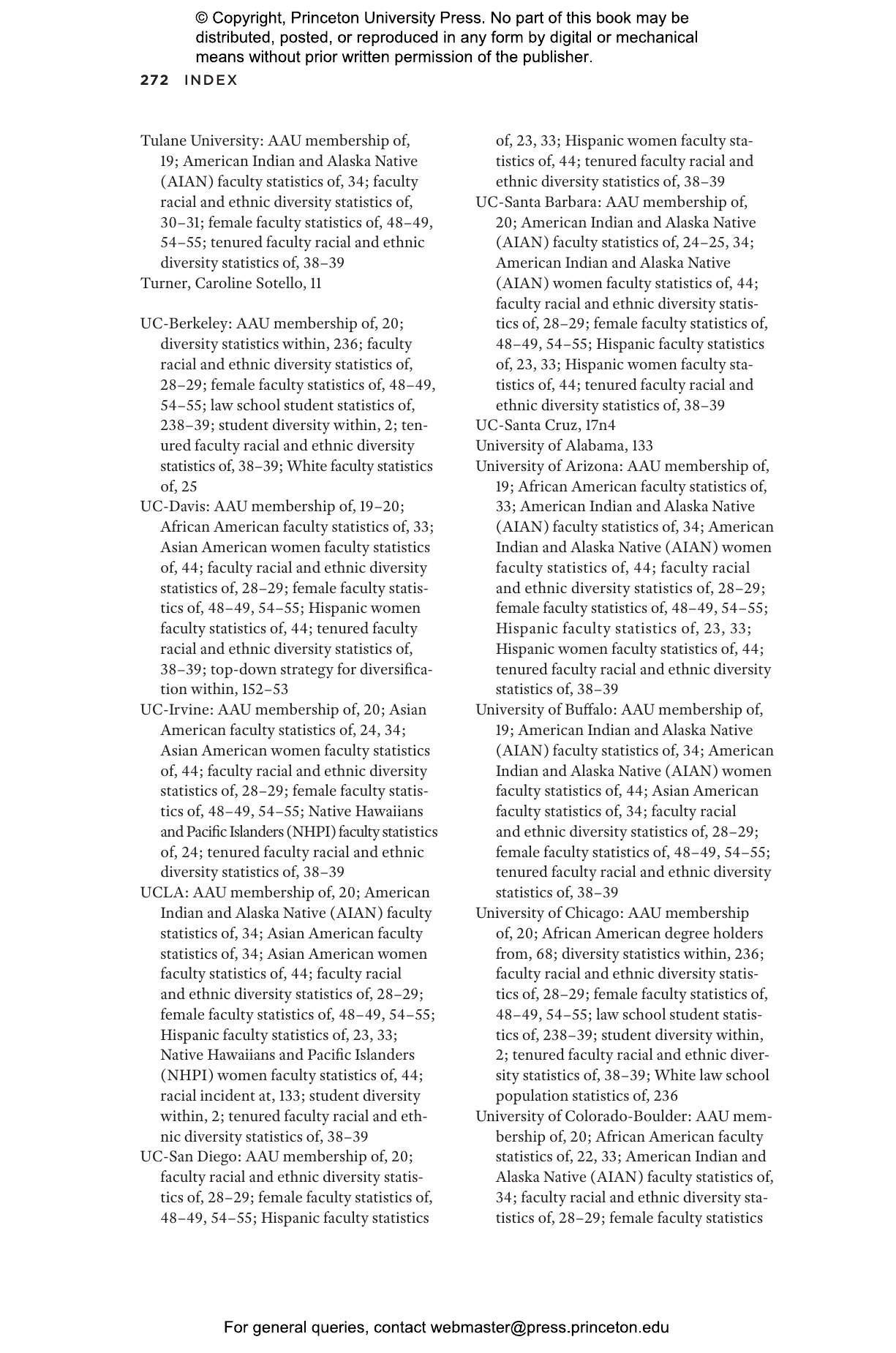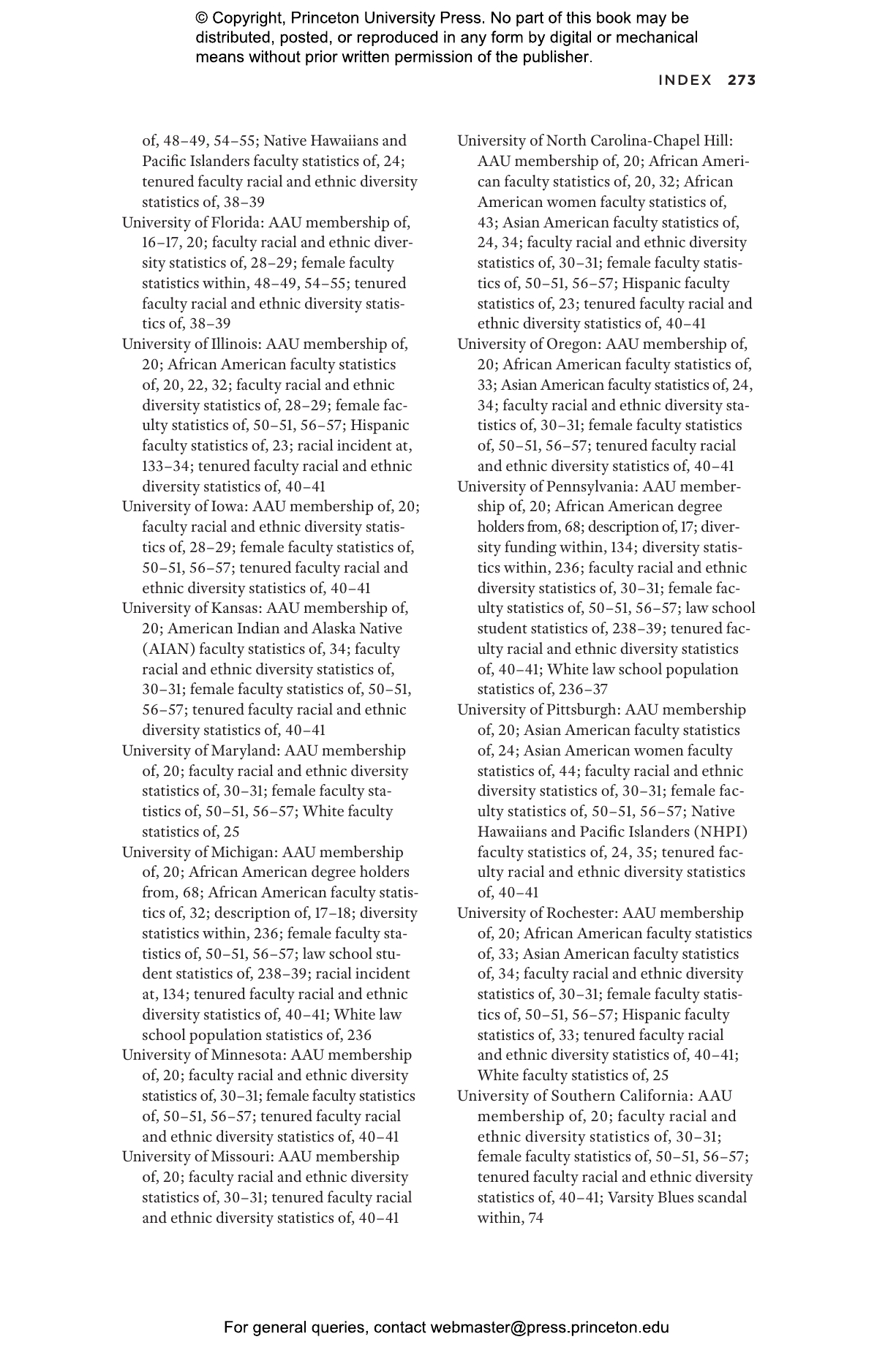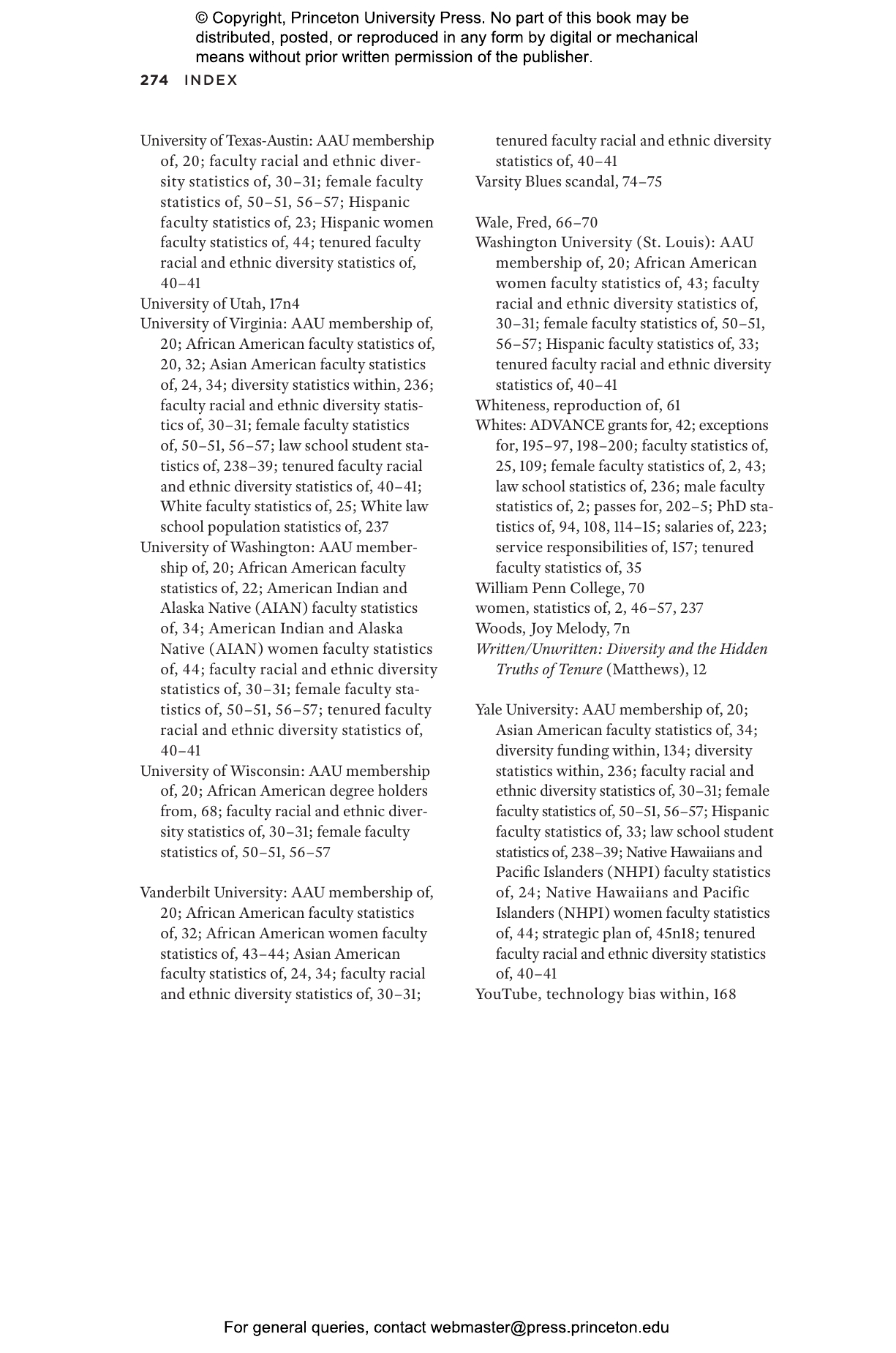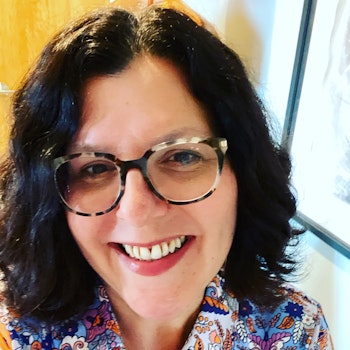While colleges and universities have been lauded for increasing student diversity, these same institutions have failed to achieve any comparable diversity among their faculty. In 2017, of the nation’s full-time, tenure-track and tenured faculty, only 3 percent each were Black men, Black women, Hispanic men, and Hispanic women. Only 6 percent were Asian/Pacific Islander men, 5 percent were Asian/Pacific Islander women, and 1 percent were American Indian/Alaska Native. Why are the numbers so abysmal? In Doing the Right Thing, Marybeth Gasman takes a hard, insightful look at the issues surrounding the recruitment and hiring of faculty of color. Relying on national data and interviews with provosts, deans, and department chairs from sixty major universities, Gasman documents the institutional forces stymieing faculty diversification, and she makes the case for how such deficiencies can and should be rectified.
Even as institutions publicly champion inclusive excellence and the number of doctoral students of color increases, Gasman reveals the entrenched constraints contributing to the faculty status quo. Impediments to progress include the alleged trade-off between quality and diversity, the power of pedigree, the rigidity of academic pipelines, failures of administrative leadership, lack of accountability among administration and faculty, and the opacity and arbitrariness of the recruitment and hiring process. Gasman contends that leaders must acknowledge institutional failures of inclusion, pervasive systemic racism, and biases that restrict people of color from pursuing faculty careers.
Recognizing that individuals from all backgrounds are essential to the creation and teaching of knowledge, Doing the Right Thing puts forth a concrete call for colleges and universities to take action and do better.
Awards and Recognition
- Winner of the PROSE Award in Education Theory and Practice, Association of American Publishers
"In this important book, Gasman (Rutgers Univ.) takes a closer look at problematic hiring practices at the 62 member institutions of the Association of American Universities (AAU). Written in a conversational style, her book draws on countless interviews she conducted with faculty and administrators at the nation’s leading universities. . . . Though written with AAU institutions in mind, the practical advice Gasman offers should also be applied in all other higher education contexts. Only then will there be a noticeable and much-needed change in faculty hiring across the country and thus a true commitment to inclusive excellence."—G. Thuswaldner, Choice
"Although it is a difficult task to speak to and appease such broad audiences, by placing professors’ engagement with DEI efforts as constitutive of their job as professors, Doing the Right Thing’s use of a wide lens convincingly shows how investments in elite affiliations are part of defending a White professoriate. To this end, Gasman impressively combines quantitative and qualitative data to support her argument and provides a benchmark for future debates on DEI in higher education."—prahdeep singh kehal, Sociology of Race and Ethnicity
“This important book addresses one of the most critical issues in faculty hiring at colleges and universities: systemic racism. Even while institutions increasingly talk about diversity, equity, and inclusion, they often overlook the processes where implicit and overt bias, marginalizing practices, and outdated understandings of academic work derail efforts to bring on those who offer new perspectives, research agendas, and instructional expertise. Gasman provides compelling arguments to counter existing hiring myths and uncovers a host of compelling perspectives.”—Marilyn J. Amey, Michigan State University
“Doing the Right Thing is incredibly relevant to this moment, as more colleges and universities are being challenged to reflect on the hard questions about the realities of faculty diversity at their institutions. Gasman demonstrates that credible and intentional practices are absolutely necessary for diversifying the professorial ranks. Without such a commitment, all the rhetoric of inclusive excellence becomes meaningless, and may in fact reproduce structures of power and exclusion.”—Mari Castañeda, University of Massachusetts Amherst
“For decades, American universities have discussed the need for diversity, transparency, and excellence in faculty hiring. So why do some of the best universities continue to miss the mark, if not altogether fail, to meet these expectations? Examining some of America’s most elite institutions, Doing the Right Thing provides insight about how institutional bias and hiring procedures influence discriminatory practices within faculty hiring.”—DaMaris B. Hill, University of Kentucky
“Doing the Right Thing could not be a more timely book. Looking at how progress toward diversifying faculty at colleges and universities has been on pause for many years, Gasman explains why ‘limited supply’ is not a credible reason for the underrepresentation of faculty of color, and she uncovers the exclusionary practices, closed networks, and lack of sincere interest that impede hiring and retention. This is a must-read for higher education leaders and public policymakers.”—Michael T. Nettles, senior vice president of Educational Testing Service
“Doing the Right Thing delivers an accessible, necessary toolkit for advancing racial diversity and equity among higher education faculty. Guiding readers beyond the myth that to pursue diversity is to surrender quality, Gasman provides a blueprint that institutions can follow for equitable, habitable, and thriving academic communities. Simply put, this book is a vital resource that deans, provosts, presidents, and search committees need in an era of racial reckoning."—Richard J. Reddick, University of Texas at Austin
“In Doing the Right Thing, Gasman offers a cogent analysis of how, despite the increase in supportive rhetoric and recent adoption of anti-racism statements, real changes in diversifying faculty have not yet become a strategic imperative for some of the most elite institutions in higher education. Through interviews, national data, and case examples, she powerfully demonstrates the deeply embedded barriers to change and what will be required to interrupt the status quo.”—Daryl G. Smith, Claremont Graduate University
